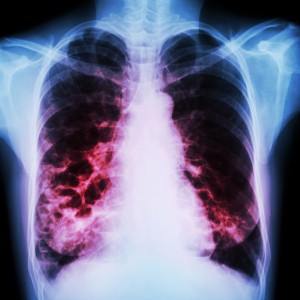 In a recent study entitled “Influence of Pseudomonas Aeruginosa on Exacerbation in Patients with Bronchiectasis” the study authors identified that in Asian populations, Pseudomonas aeruginosa is the main pathogen found in bronchiectasis patients and that it impacts disease progression and outcomes. The study was published in the Journal of Global Infectious Diseases.
In a recent study entitled “Influence of Pseudomonas Aeruginosa on Exacerbation in Patients with Bronchiectasis” the study authors identified that in Asian populations, Pseudomonas aeruginosa is the main pathogen found in bronchiectasis patients and that it impacts disease progression and outcomes. The study was published in the Journal of Global Infectious Diseases.
Bronchiectasis, a disorder characterized by dilation and wall thickening of lungs bronchi, is accompanied by symptoms of chronic cough production, breathing difficulties and recurrent infections. This permanent infection rate induces higher levels of inflammation, causing damage to both bronchi and bronchioles, which, once damaged, become more prone to further infections. The primordial pathogen isolated in bronchiectasis is Pseudomonas aeruginosa with a significant percentage of patients’ lungs colonized with the bacteria (around 33%). Other pathogens also retrieved in bronchiectasis include Streptococcus pneumoniae, Haemophilus parainfluenzae, Staphylococcus aureus, Moraxella catarrhalis, nontuberculous mycobacteria, and Aspergillus species. Notably, however, infection by Pseudomonas aeruginosa is associated with enhanced lung function decline and higher exacerbation rates (meaning an increase in the disease severity or its symptoms), ultimately leading to higher morbidity when compared to other infections. In order to choose an appropriate antibiotic therapy for bronchiectasis, it is crucial to identify the pathogen and its antimicrobial susceptibility pattern.
While Pseudomonas aeruginosa was identified as the main pathogen in western populations, whether the same pattern is observed in Asian populations is currently unknown. The authors performed a prospective study where they analyzed samples retrieved from 117 patients (56.4% females and 43.6% males) from south India diagnosed with bronchiectasis and identified the microbial species present in the samples. The study was conducted during one year.
The team identified that Pseudomonas aeruginosa is the most common pathogen in the isolates, followed by K. pneumonia and Acinetobacter spp. Other pathogenic bacteria were also identified but at significant lower rates. As previously described for Western populations, here the authors also observed patients with Pseudomonas aeruginosa exhibiting higher rates for exacerbations accompanied by longer periods in the hospital. Increased disease severity was also found in Pseudomonas aeruginosa positive patients, when compared to those negative for Pseudomonas.
The authors highlight that in light of their findings, and since they also found that once acquired, Pseudomonas aeruginosa can be difficult to eradicate from bronchiectasis patients, infection should be targeted as soon as possible with appropriated antibiotics therapy (dosages, duration and delivery).

